Tongue-Wheel: A Hands-Free Revolution for Wheelchair Users
The Tongue-Wheel is an innovative, tongue-controlled wheelchair system designed to provide hands-free mobility for individuals with severe motor impairments. Unlike traditional wheelchairs that rely on hand controls, head movements, or voice commands, the Tongue-Wheel utilizes tongue gestures for navigation, offering a reliable and fatigue-free alternative.
By integrating real-time computer vision, machine learning, and an error prevention mechanism, this system ensures precise, safe, and intuitive control.
Design of Tongue-Wheel
The Tongue-Wheel system consists of several integrated modules that work together to ensure smooth and reliable operation of the wheelchair. The key components include:
- Vision Module: Captures real-time visual data to track the user’s head and mouth position.
- Computational Module: Monitors and processes the tongue gestures, translating them into actionable commands.
- Controller Module: Receives commands and converts them into specific actions for the motors.
- Power Module: Supplies the necessary energy to all system components.
- Motor Modules: Control the movement of the wheelchair's four independent wheels.
- Ultrasound and Infrared Sensors: Monitor the environment for obstacles to prevent collisions.
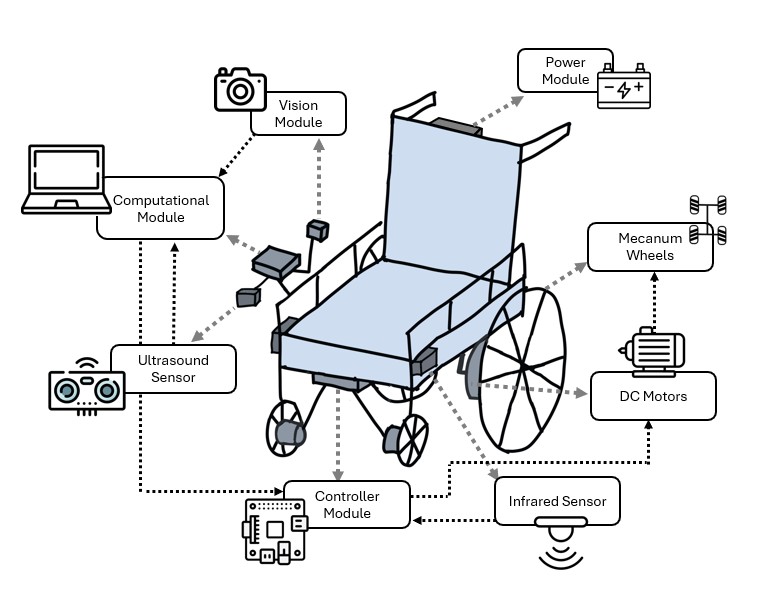
Control Panel of Tongue-Wheel
The control panel interface of the Tongue-Wheel is designed to be intuitive, allowing the user to easily adjust the speed and direction of movement using simple tongue gestures. The control panel consists of two primary controls:
- Speed Adjust: Allows the user to adjust the wheelchair’s speed, from zero to full, with smooth increments.
- Direction Adjust: The user can change the direction of the wheelchair, including forward, backward, left, right, and sideways movements.
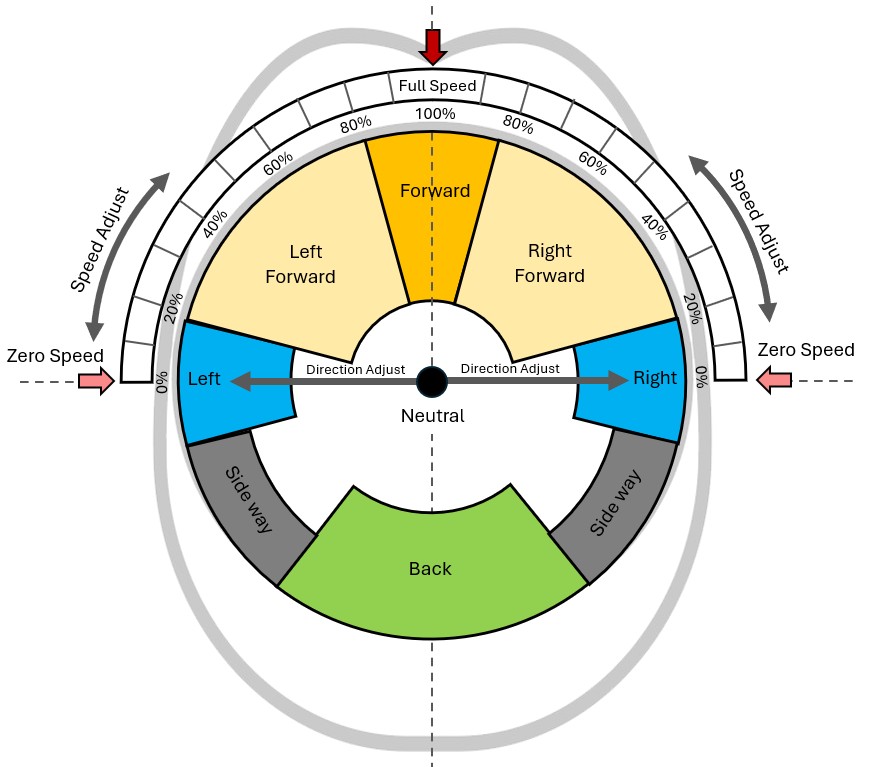
Wire and Connection between Different Modules
The controller module interfaces with the motor modules, which control the wheelchair’s wheels based on the input received from the computational module. The vision module detects the user’s tongue movements and passes this data to the computational module, which processes the input and sends commands to the controller. Additionally, the ultrasound and infrared sensors provide environmental awareness, ensuring that the wheelchair can avoid obstacles.
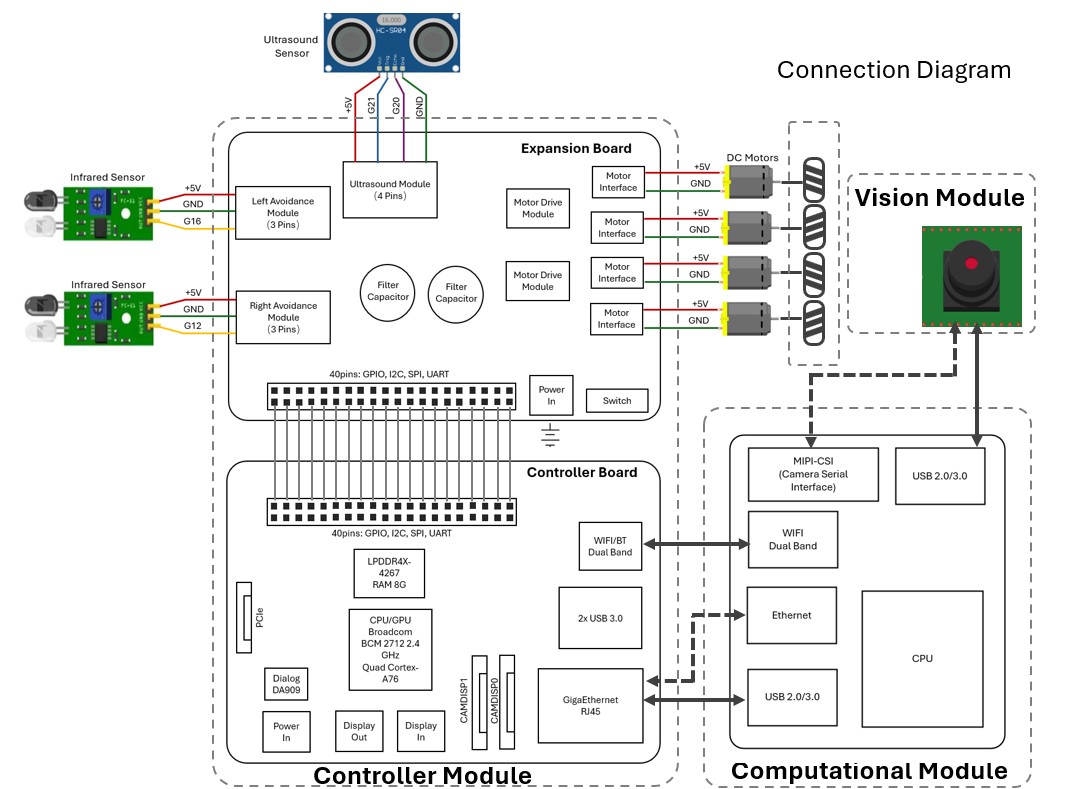
Server-Client Communication Model
A server-client communication architecture is implemented to facilitate real-time data exchange between the controller module and the computational unit. The computational module detects tongue gestures and transmits commands to the server. The server processes the data and sends navigation commands to the wheelchair's motor system. This architecture ensures efficient resource allocation, rapid data processing, and scalable integration with other HMIs.
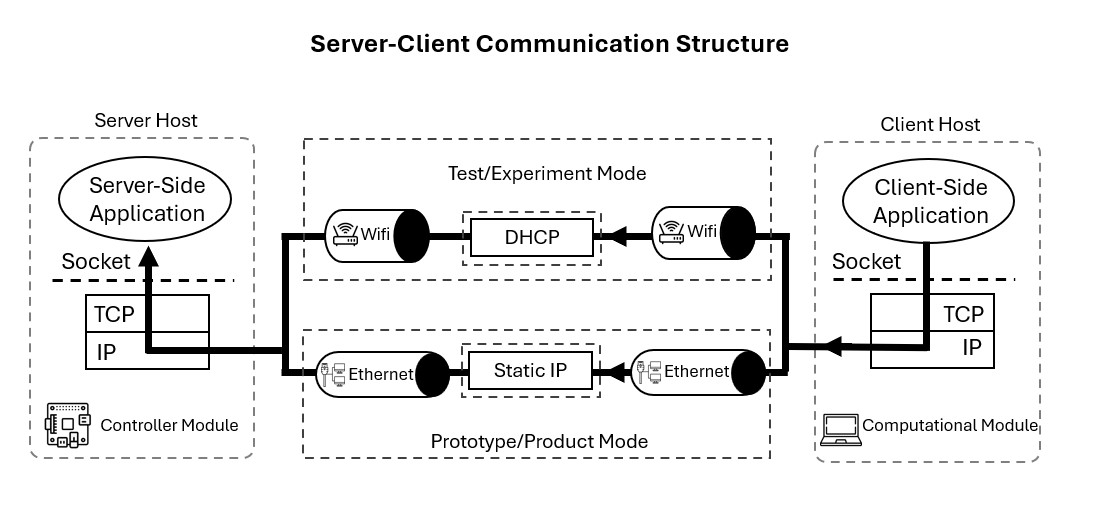
Prototype
For the Tongue-Wheel, we implemented a prototype for experimental validation. The prototype incorporates a Raspberry Pi 5 with an expansion board as the core controller module. The Mecanum wheels are driven by four independent DC motors, allowing for precise, omnidirectional movement. The prototype's frame is 3D printed, and a 4000mAh 7.4V lithium battery provides power. Infrared and ultrasound sensors are integrated for obstacle detection.
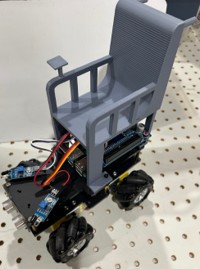
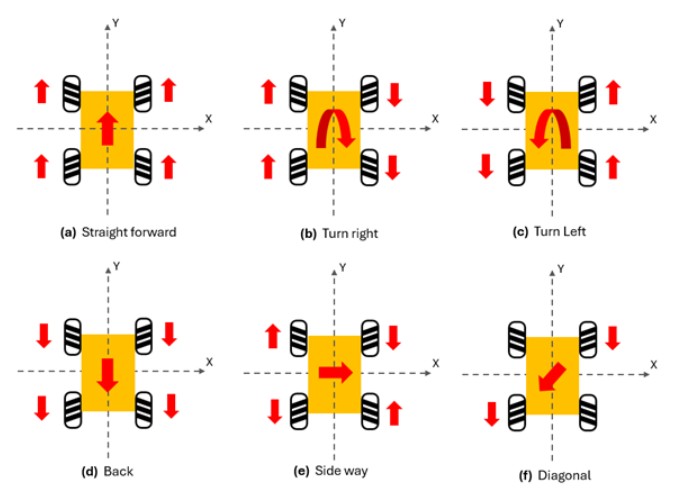
Experiments
A. Obstacle Course Design
The experiment was carried out using a Tongue-Wheel prototype in a 200 cm × 300 cm area featuring 1 loop, 8 turns, 2 U-turns, and 20 obstacles. Participants navigated through six predefined missions.
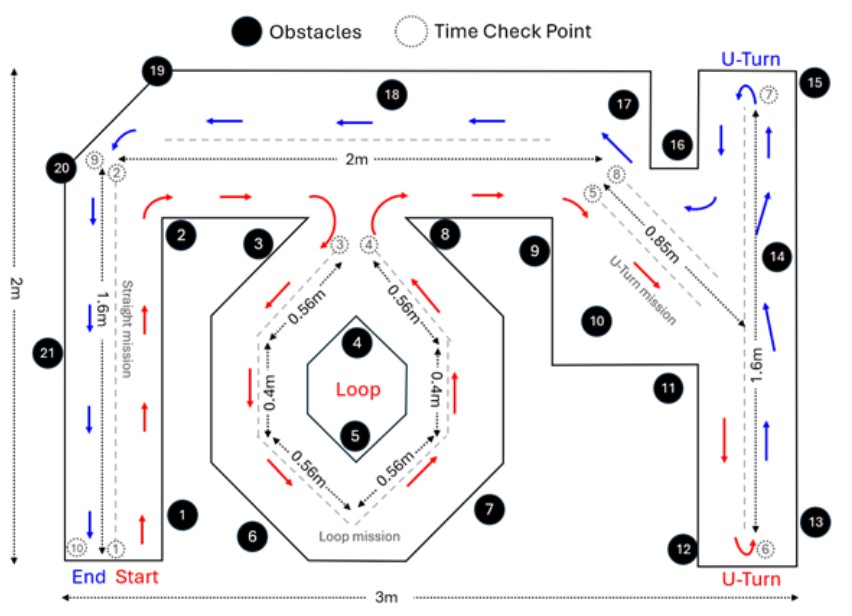
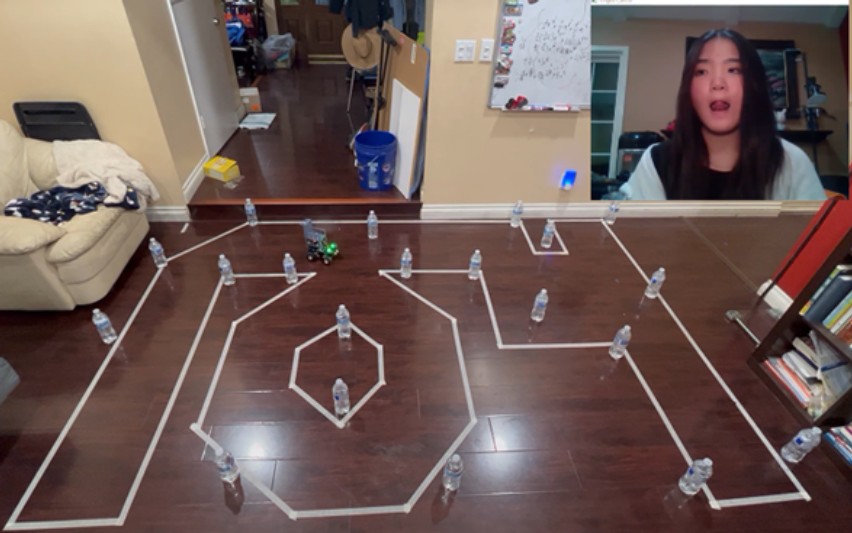
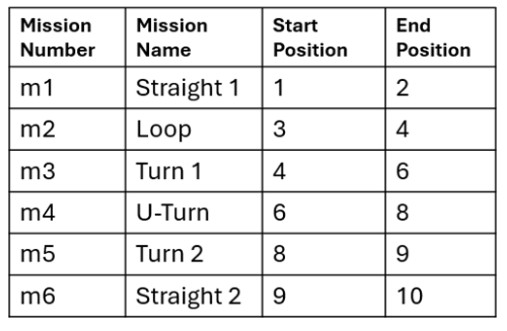
B. Evaluation
Participants controlled the wheelchair using predefined tongue gestures. The system’s error prevention mechanism was activated when necessary to halt the wheelchair. The results demonstrated high navigation accuracy and safety performance:
- Collision rate: Remained below 1% in all trials.
- Off-track incidents: The average was recorded at 0.4 incidents per trial.
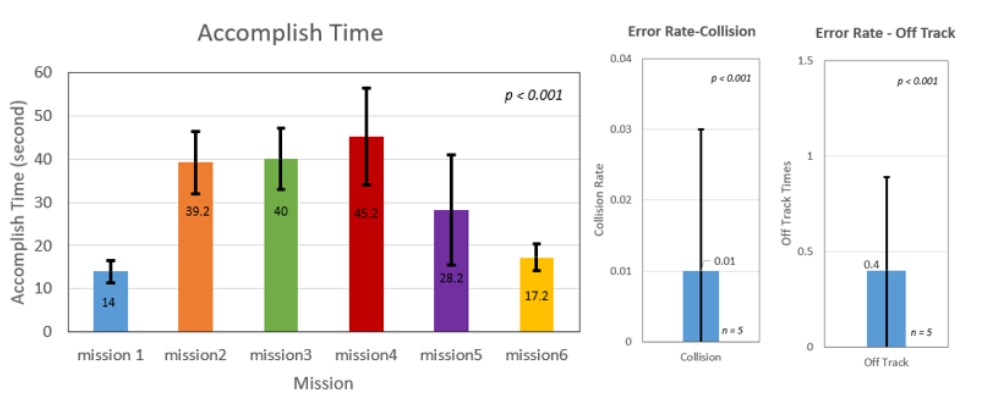
Demo Video
Watch the Tongue-Wheel prototype in action, demonstrating hands-free wheelchair navigation through a complex obstacle course.
Conclusion
These findings confirm that Tongue-Wheel provides a reliable, precise, and user-friendly mobility solution for individuals with severe motor impairments.